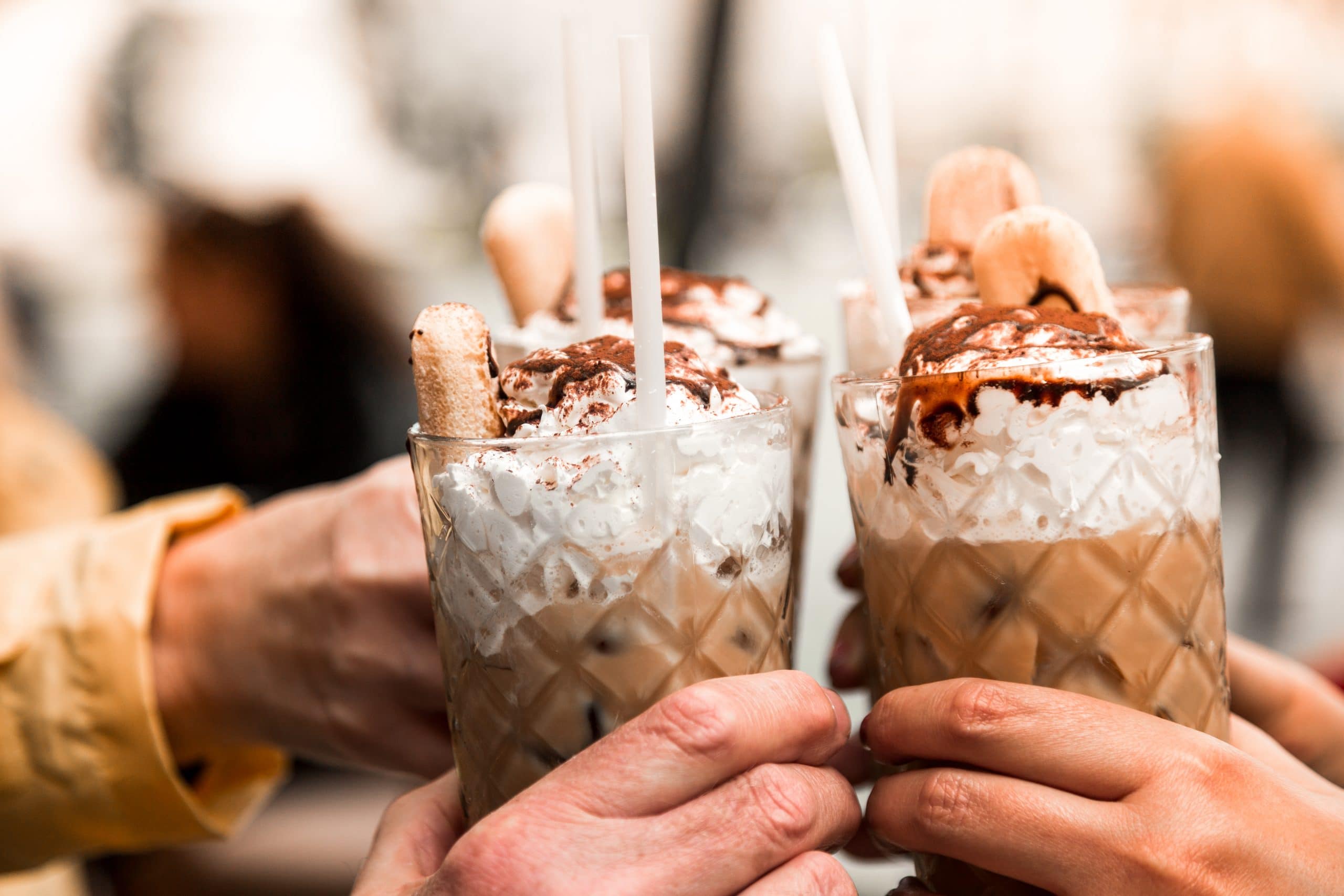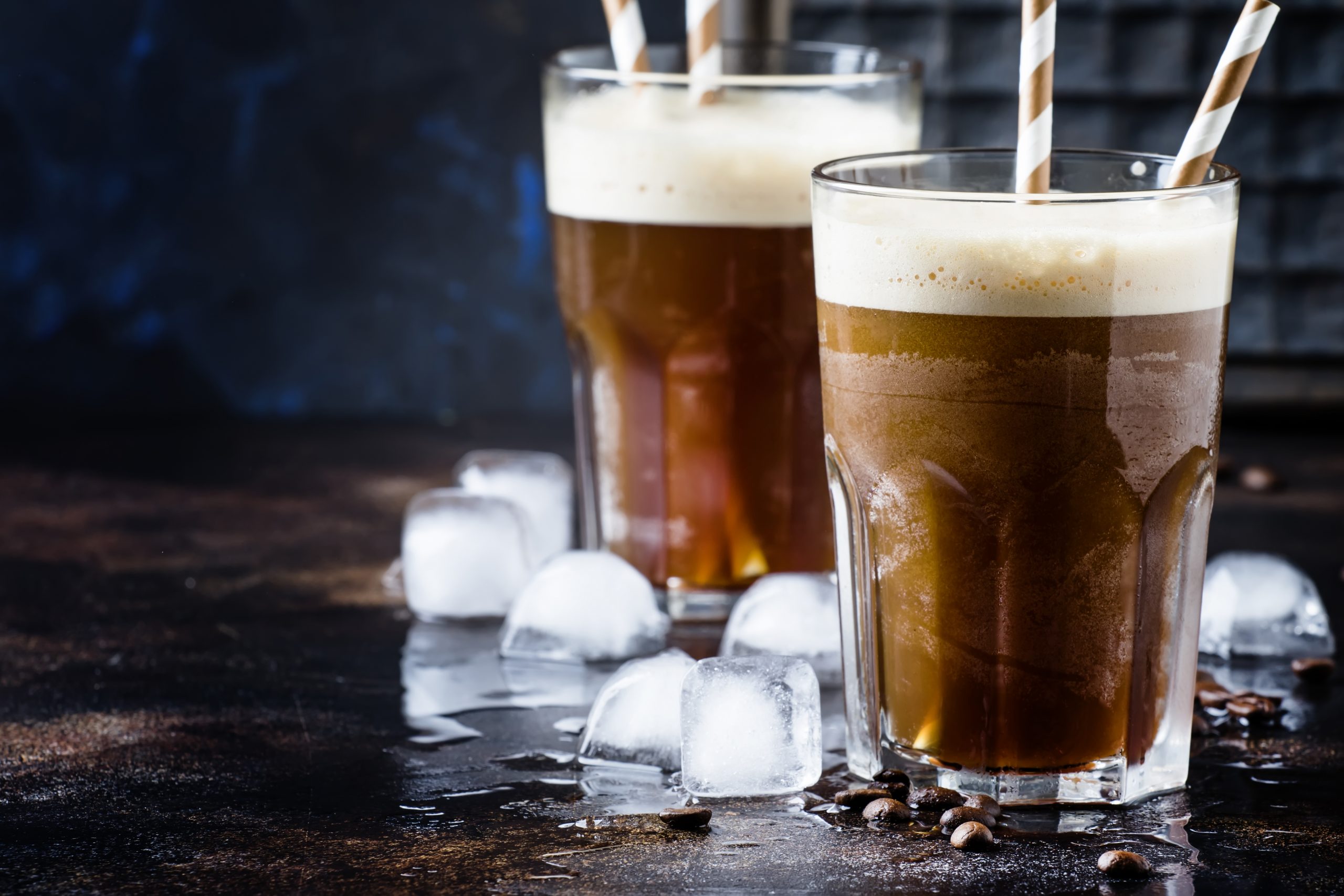Not all coffee frappes are created equally - what's the difference between glykós, métrios, and skétos?

Coffee frappes with milk foam
Not all coffee frappes are created equally – what’s the difference between glykós, métrios, and skétos?
No doubt you’ve heard of coffee frappes. But do you know the story of their creation, what the Bulgarians do with them, and looking forward, what the most recent coffee trend out of Greece is? We give you the rundown to help you avoid any beach side embarrassment when it comes to glykós, métrios, and skétos.
We begin in Thessaloniki, Greece, 1957. It’s time for the annual Thessaloniki International Fair where Nestlé’s Giannis Dritsas was preparing to show a new shaker product designed for chocolate milk loving kids. Fellow employee, Dimitris Vakondios, is said to have taken a shaker during his break and made a more adult drink with instant coffee, cold water, and ice, i.e., creating the first ever frappe.
The refreshing twist on a daily necessity suited to the Mediterranean climate, proved to be a popular drink in Greece. Recognizing the opportunity abroad, Nestlè began an extensive marketing campaign for the Nescafé frappé.
It wasn’t until 1994 when Bostonian George Howell, or employee, Andrew Frank, depending on where you look, combined the Greek frappe with the Italian cappuccino to create the frappuccino. Howell’s Coffee Connection chain would soon be sold to Starbucks, along with the rights to use, make, and market the frappuccino. This would propel the popularity of the frozen coffee drink and see it evolve to include a wide range of flavorings, whipped cream toppings, syrups, and more. Quite different to the frappe, which is always made of instant coffee, ice, and cold water, the frappe and its variations were readily adopted by coffee shops, cafes, and ice cream parlours and gelato shops.

Greek frappes with added evaporated milk
Coffee Frappes Add-ons
While milk is normally omitted from frappes in Greece, locals will happily add some evaporated milk without fuss. Evaporated milk because it works with the instant coffee to create a superior froth! Like milk, sugar is optional so locals will ask you how sweet you’d prefer your coffee frappes, to which you can use one of three responses:
- Skétos – plain, no sugar
- Métrios – medium, 2 spoonfuls sugar
- Glykós – sweet, 4 spoonfuls sugar
Further changes to the recipe can be found at some beachside bars in Greece who will add liqueurs like Baileys and Kahlua to their frappes. Bulgarians are even said to replace water in favour of coca-cola, though! If, right now, you’ll settle for any coffee related dessert take a look at our suggestions.

Coffee frappe Skétos (instant coffee and cold water, no sugar)
Today, the frappe is still the most popular coffee beverage in Greece and Cyprus, plus the official national coffee drink of Greece, but trend-wise, the freddo is what we should all be asking for. More precisely, the freddo espresso, which is a shot of espresso that’s mixed with a couple of ice cubes using an electric blender or hand mixer (not shaken like the original frappe). The contrast between the hot and cold is said to be what creates the signature foam and sugar may be added to this, but if you prefer milk, the freddo cappuccino is the abovemention espresso but with a creamy layer of foam on top. According to Christos Zamanakis, Education and Quality Manager at Dimello Coffee, “In a country with a highly developed coffee tradition… this was a natural consequence.”
So for your next coffee frappes and freddo espressos, will it be skétos, métrios, or glykós?




